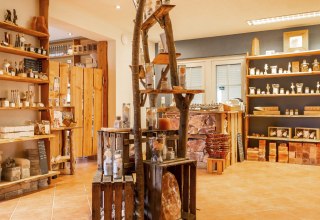The village church Semlow is a village church from the beginning of the 13th century in the municipality of Semlow in Western Pomerania and is one of the oldest fieldstone churches in the lower Recknitz valley.
The church gained a foothold in our area after 1170, when Henry the Lion subjugated the Slavs living here. About twenty years later, the construction of the Romanesque fieldstone church in Semlow was started. It was completed around 1220, probably after political events related to the immigration of German settlers interrupted the work. On the west side of the tower there is a large inscription stone, which refers to the renovation of the church in the 19th century by Count Behr-Negendank. In the tower there are three bells (from 1611, 1447 and from the end of the 14th century) and a fully functioning clockwork from 1856.
Of the rich interior decoration of the church, the first thing that catches the eye is the complete painting (1860), which is the main work of the Lübeck painter C. J. Milde. The paintings in the late-Nazarene style are integrated into a Romanesque architectural painting and show scenes from the Old Testament on the walls below and archangels above, prophets in the triumphal arch, and depictions of the Last Judgment on the ceiling with Christ as the Judge of the World in the center. Also by Milde are the bust portraits of church fathers, missionaries and reformers in the organ gallery. The Grüneberg organ was built in 1913 and restored in 1999. The oldest furnishing is the Gothic triumphal cross from the second half of the 15th century. A good hundred years younger is the pulpit, whose sound cover is crowned by a Moses figure and around whose basket relief-like biblical images of the death and resurrection of Jesus can be seen. The visitor feels at home here and can see more and more a beautiful building.
Telephone contact for guided tours at 038222-30210 - Doris Geier.





















